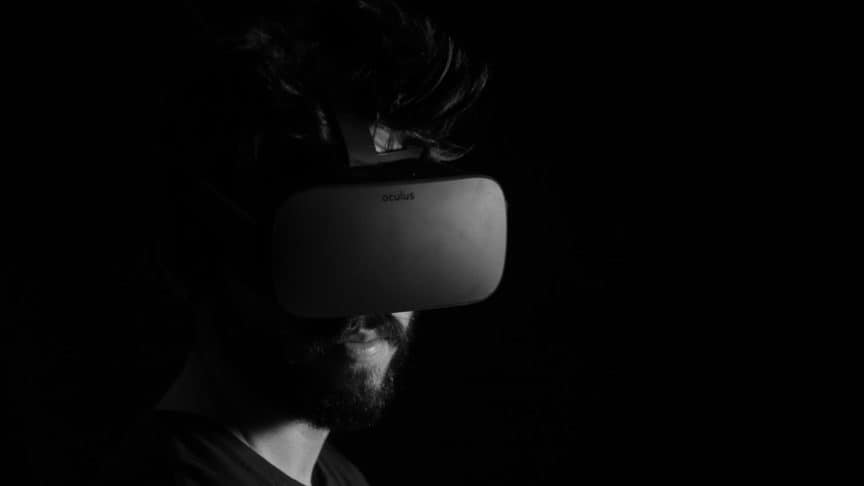Unless you’ve been disconnected in the last decade or so, it is impossible not to have heard of virtual reality (VR) and augmented reality (AR) storytelling. AR and VR are possible thanks to improvements in technology that allows AR and VR in a compact system.
Whereas ten years ago a VR required a bulking, immersion breaking attachments to field, today’s AR technology can be carried on a mobile phone.
Pokemon Go is probably the first explosive example of AR as a commercially successful product. The game took the world by storm! Here’s why I believe AR and VR will sweep the entertainment world by storm.
Narrative Potential Decoded
Simply put, Narrative potential speaks of the opportunities that immersive environments that can invite user engagement.
Film and literature often tell stories with a predetermined outcome. It is the work of the writer and the filmmaker to deliver the world and the story. Immersive environments offer a new paradigm because of the extreme level of immersion they can offer.
For VR and AR, the creators are tasked with building a whole brave new world to invite audience engagement. This allows amazing levels of creativity to express themselves.
This is best expressed in the compact mobile apps which can still deliver the deep-immersion of virtual experience. Each scene, space, and even objects are a way for the creator to produce user engagement.
It is vital to keep in mind that “narrative potential” is not limited to story-driven experiences only. It applies to all manner of content, from apps to adverts.
The name is a reference to the inherent narrative which can occur in our minds. This was discovered during the Heider-Simmel study from the 1940s. The study suggests that the brain will create a story even if there was none in the first plus.
Clearly narrative potential is a great way to produce AR and VR because the content resonates deeper with audiences.
The top three tips to maximize Narrative Potential Are:
Allow space to motivate the story;
Think small, the devil is in the details; and
Invite action but do not command behavior.
Allow Space to motivate the story.
A Great Way to Produce AR and VR is to allow the space to motive the story that has to be told. As your friendly interior designer will tell you, every space can create a story.
Imagine walking into an office. What does the orderly arrangement of cubicles say? The organization shows that the people are regimented and ordered to form a specific function in the unit. This and many other details of the office can allow the viewer to weave a story around what he sees in his mind.
In forming virtual spaces, creators can use the same assumptions from real life into the virtual world to weave amazing stories.
For example, in a table top AR game size differences can be used to exaggerate scale and possibly terrify the user if that is the intent. The layout of the room and the lighting can likewise convey fear or terror.
VR allows so much more opportunity to engage the senses and tell a story. Used creatively and it can be the source of untold immersion.
Think small. The Devil is in the details.
Immersive apps do not have to model the whole world. It is more important to be able to model the minute details from greater immersion. Very small details can have a huge impact on what the user can perceive.
Sound can also aid in making the immersion complete. In a VR system sound is fed directly to the person’s ears so the chance to create immersive surround sound.
The immersion can even be used to subvert expectations. One use of Narrative Potential as a great way to produce AR and VR is to lead the user down a belief that one thing is going to happen and then create a major plot twist.
For example, the VR creates the image that the person is walking down a safe corridor. All indicia suggest that he is in a safe place. There is only a minute detail that something might be amiss.
Then slowly the anticipation builds as the sense of unease grows. But instead of danger or tragedy, he is treated to more safety. Or instead of something to fear he gets something interesting and rewarding.
If the VR or AR experience is one of an adventure game, attention to detail is critical because every frame can tell its own story. Sometimes carefully created surroundings can do the job of pages of narrative text.
Invite Action but Do not Command Behavior.
One mistake that ruins the opportunity to make quality content is when the user is forced down a certain path because the program does not leave any choice. This is a bad design decision because if the game is done in this manner, the user will feel mechanical, rote, and unable to actually influence the outcome.
A Great Way to Produce AR and VR is to consider the following points:
- Choice makes a game more compelling
- The absence of choice ruins immersion and enjoyment
- The right balance of choice and direction is important
As stated above you want the user to tread down a path, but it has to appear as if the user is actually making meaningful choices as opposed to just doing what is immediately in front of him.
One example of this is in Pokemon Go. It looks as if the user has unlimited choices in where to roam. Yet the user is subtly lead down a path towards gyms and rare Pokemon by the game. He still thinks he is acting of his own will, but really he is directed towards a specific place.
Conclusion
At the end of the day, AR and VR provide exciting new opportunities to tell stories. The narrative potential of VR and AR is practically limitless. Take to heart the tips I shared today so you can begin to tell your own amazing stories. There is no telling what can be done with modern VR and AR technology.

